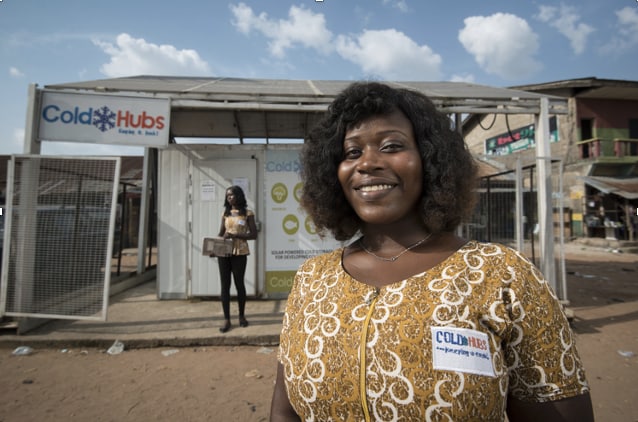Circular economy in action: 9 examples of businesses and policy-makers accelerating the transition
These nine circular economy initiatives from across the globe show that the circular transition is underway.
Image: Freepik.
Stay up to date:
Circular Economy
Listen to the article
- The recently released Circularity Gap Report 2023, from Circle Economy, reveals that the global economy is only 7.2% circular.
- By implementing 16 circular solutions, the global economy can reduce material extraction by one-third, thereby reversing the overshoot of five planetary boundaries and limiting global warming to within 2°C.
- These nine circular economy initiatives from across the globe show that the circular transition is underway.
Today, circularity has fallen from 9.1% to a meagre 7.2%. This means that of the more than 100 billion tonnes of materials extracted from the planet annually, only 7.2% are cycled back into the global economy. To reverse the overshoot of planetary boundaries and limit global warming to a 2°C increase, we need a holistic shift toward circularity.
Yet change won’t look the same around the world: some countries need to radically reduce their material footprint, while others need to stabilise or even grow it. So, how can we shape a transition that’s suited to all?
The Circularity Gap Report 2023 considers these nuances and highlights circular solutions across three different country groups: “Build”, “Grow” and “Shift”. Low-income (Build) countries house 46% of the world’s population but have low material consumption and struggle to meet basic societal needs. Meanwhile, middle-income (Grow) countries are rapidly industrialising and have a growing middle class – consuming 51% of materials. Finally, the world’s highest-income (Shift) countries deliver high living standards but consume 31% of the world’s materials.
The report shows how circular solutions can reduce material extraction and use by one-third – but to translate theory into action, we need real-world examples of how these solutions can adapt to local contexts.
What is the World Economic Forum doing about the circular economy?
Building circular economy that fosters wellbeing with smart material growth
Build countries live within planetary boundaries but still need to build an economic system that satisfies their people’s basic needs. The following initiatives showcase how circularity can be implemented to build up infrastructure while improving standards of living by working with, not against nature.
1. ColdHubs: solar-powered, cooling-as-a-service solution
Nigeria-based ColdHubs – a post-harvest, solar-powered, cooling-as-a-service solution – makes food waste a thing of the past and lowers emissions in the process. Established in 2015 by entrepreneur Nnaemeka Ikegwuonu, ColdHubs are square-metre storage units that preserve fresh food for up to 21 days. In 2020, ColdHubs’ 54 units saved more than 42,000 tonnes of food from going to waste – equivalent to over 1 million kilograms of CO2.

2. Bangladesh’s award-winning hospital
A remote Bangladeshi hospital, labelled the “world’s best new building”, is making waves. Situated in Shyamnagar village, Friendship Hospital was built using local, sustainable materials and local craftsmen, with equal access to healthcare for vulnerable populations front of mind. The architects purposefully adapted to the surrounding riverine landscape by creating a canal that cuts across the hospital’s premises, providing natural cooling and separating inpatients from outpatients. Two water tanks at either end of the canal also hold rainwater harvested on-site.

3. Electrifying Kathmandu’s cabs
Kathmandu’s air quality is hugely polluted due to poorly maintained, congested roads and lacking transport management. To combat this problem, Safa Tempo, a battery-powered three-wheel public transport vehicle, was introduced in Kathmandu in the mid-1990s—and by the 2000s, more than 600 of these electric vehicles occupied urban streets. Charger manufacturing, battery charging stations and operations created around 750 jobs, while 600 jobs opened up for drivers.

Growing material-efficient economies that serve society and the planet
Largely middle-income, Grow countries are industrialising rapidly and building infrastructure to lift their populations out of poverty. These circular initiatives prove that it is possible to grow industries within the safe limits of our planet while also boosting local and Indigenous populations.
4. Shenzhen’s shift to electric mobility
Road transport contributed 86.8% of China’s overall carbon emissions in 2019 and the Chinese transport sector as a whole contributed 11% to all global carbon emissions. In 2017, Shenzhen was the world’s first city to electrify all buses to cut emissions, reduce noise pollution and improve air quality. The result was an estimated annual decline of around 4.316 million tonnes of particulate pollution.

5. Thai start-up fills in the gaps for plant-based diets
The production of animal foods – from eggs and dairy to meat – has tripled over the last 50 years, putting immense pressure on several planetary boundaries. Global Bugs provides a solution with the help of an alternative protein made from crickets. Cricket powder’s production is more cost-effective and less carbon-intensive than cattle and it boasts higher nutritional value. Regarded as a superfood, crickets provide a rich source of healthy fats, vitamins, minerals and protein that increase the nutritional value of food, beverages, dietary supplements and pet food.

6. Brazilian cosmetics brand flips the script on deforestation
Brazil contributes to 33.12% of all tropical deforestation, mainly due to industrial livestock production. Natura wants to change this narrative. The organization produces cosmetics with ingredients sourced from the Amazon rainforest. However, Natura boasts an untraditional business model: it follows the “standing forest” philosophy, which advocates that a tree has much more value standing up than being chopped down. This philosophy has preserved nearly 2 million hectares of rainforest while funnelling Natura’s profits into local communities.

Shifting economies away from overconsumption and waste
Higher-income Shift countries are heavy consumers and have a way to go in rethinking their business-as-usual. The onus is on Shift countries to cut their material use and pollution and take responsibility for their own waste. For Shift countries, circular opportunities abound. The question remains, however: how fast can they scale the transition?
7. Techy bins to solve South Korea’s food waste problem
Waste piling up on South Korean streets spurred public protests and a ban was imposed in 2005 on food landfilling. Today, Seoul plans to use food waste for urban farming initiatives. The city has installed 6,000 bins with instruments such as scales and Radio Frequency Identification (RFID) to weigh food waste as it is deposited and charge residents accordingly. City officials say that RFID machines have helped reduce food landfilling in Seoul by nearly 47,000 tonnes in six years.
8. How the Netherlands became the global bicycle capital
In the 1970s, the Netherlands witnessed mass protests in response to increasing traffic fatalities and the demolition of historic areas to make way for motorways. With an ongoing energy crisis, this created a perfect storm – prompting the government to prioritise safe and clean mobility. With the construction of 20,000 kilometres of bike lanes, cycling became the new norm. Now, more than a quarter of all trips in the Netherlands are made by bike – and with 17 million inhabitants, the country is home to 23 million bicycles.

9. France’s repairability rating to extend product lifetimes
In a concerted effort to combat planned obsolescence, France was the first European country to introduce a repair rating for products including smartphones, televisions, laptop computers and lawnmowers. The index, which has to be displayed near products in stores and online, will eventually cover more items and will also rate durability. Following in France’s footsteps are the US Right to Repair Bill and the EU Sustainable Products Initiative.

Download the Circularity Gap Report 2023 or visit our Knowledge Hub, an open-access repository of circular case studies, to learn more about global circular initiatives.
Accept our marketing cookies to access this content.
These cookies are currently disabled in your browser.
Don't miss any update on this topic
Create a free account and access your personalized content collection with our latest publications and analyses.
License and Republishing
World Economic Forum articles may be republished in accordance with the Creative Commons Attribution-NonCommercial-NoDerivatives 4.0 International Public License, and in accordance with our Terms of Use.
The views expressed in this article are those of the author alone and not the World Economic Forum.
Related topics:
Forum Stories newsletter
Bringing you weekly curated insights and analysis on the global issues that matter.
More on Circular EconomySee all
Ryan McClanaghan and Lisa Chamberlain
May 23, 2025
Vivin Rajasekharan Nair and Gokul Krishna A
May 23, 2025
Maximiliano Frey
May 21, 2025
Wesley Spindler, Luna Atamian Hahn-Petersen and Sadaf Hosseini
May 19, 2025
Navi Radjou
May 8, 2025
Anu Devi and Sarah Franklin
April 30, 2025





